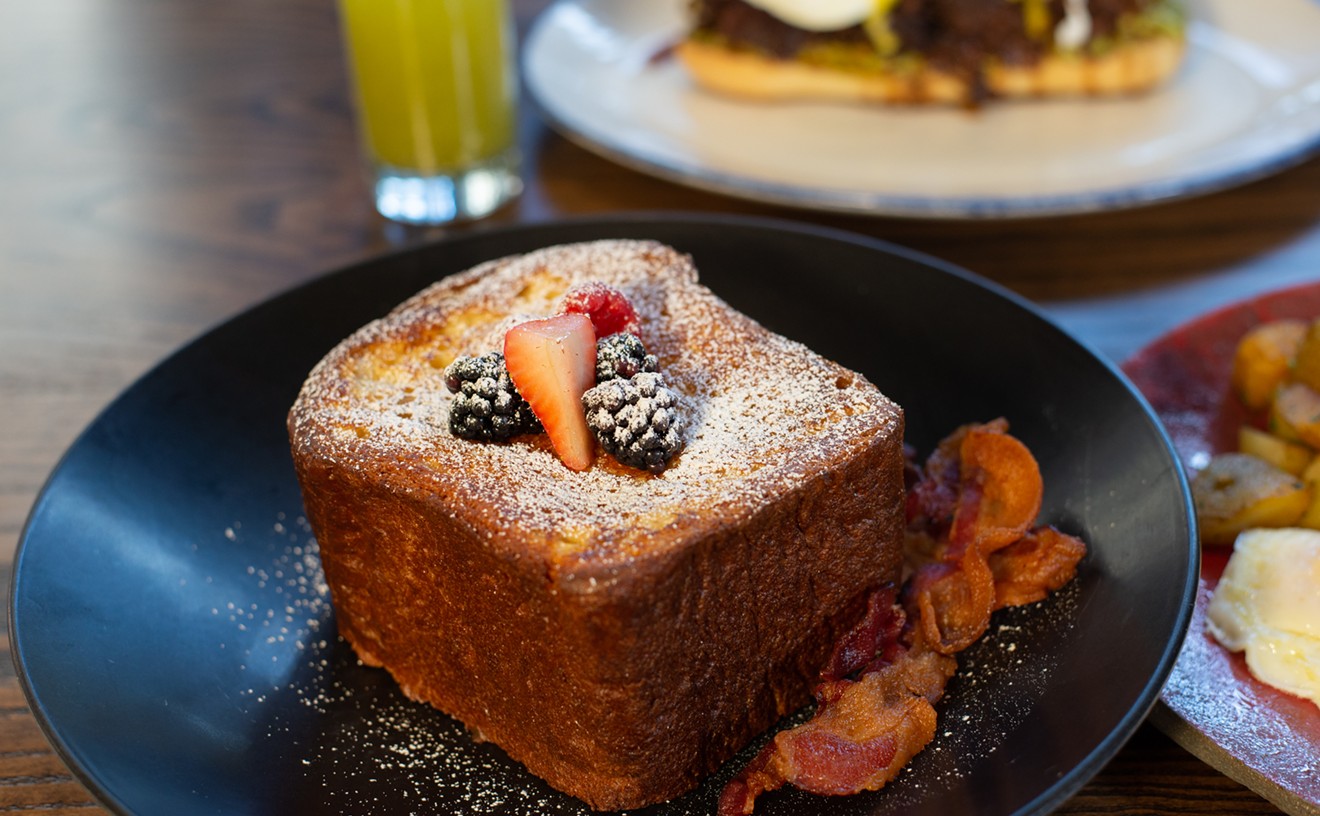Arguments over the most contentious ingredient in Caesar salad have lately centered on which type of anchovies chefs ought to use.
"If it was my preference, it would be white anchovies," says Jackie Glauberman, who's chairing this weekend's 19th annual Caesar Salad Competition, a celebrity chef event sponsored by the local chapter of the American Institute of Wine & Food. It takes place 4:30-8:30 pm. Sunday at Union Station downtown.
Anchovies vie with olive oil for the title of a basic Caesar's most variable ingredient: There are anchovies from South America and anchovies from Europe; anchovies packed in salt and anchovies packed in oil. Every type of anchovy has a slightly different flavor.
There weren't any anchovies in the salad Caesar Cardini invented in Tijuana in 1924. But his recipe called for Worcestershire sauce, and an inspired acolyte made the natural leap to anchovy filets.
"Somebody said it would be better or if the anchovies flavor were stronger," former Gourmet editor Ruth Reichl told NPR's Susan Stamberg in 2006. "And actually, I think, it is better."
There are still eaters who refuse to use the words "anchovies" and "better" in the same sentence, a legacy of the years when low-quality anchovies ruled the American market. Cheap anchovies tend to be limp, smelly and salty, a quality that's exacerbated by the high heat of a pizza oven.
That doesn't mean great anchovies can't come from a tin: Respected Spanish and Italian producers cure fresh, meaty anchovies in barrels of sea salt before tinning them for sale. Those anchovies, glistening with umami, are a favorite ingredient of chefs who've found ways to slip them into sauces and meat marinades. But tin skepticism has helped propel the general popularity of white anchovies, which are pickled and shipped in vinegar.
"I like to call them behind-the-counter anchovies," John Carr, assistant manager of Jimmy's Food Store, says of his tub of white anchovies, which sell for $19.99 a pound. "These are the anchovies that turned me on to liking anchovies in the first place."
While some white anchovy detractors complain the pickling process imparts a herring-like flavor, Carr believes white anchovies are perfect for Caesar salads.
"They don't put off a salty, overpowering taste," Carr says. "They're mild and not too fishy."
Asked whether Caesar salad -- a Jazz Age creation concocted for partying Hollywood celebs - should strive for subtlety, Carr compared the dish to another classic in the American salad canon:
"It's almost like ranch dressing," he says. "You don't want to have it really strong, you just want tang."
In Dallas, white anchovies have appeared on Caesar salads at restaurants including Neighborhood Services, Dallas Fish Market, Go Fish Ocean Club and Salum.
Chefs competing in the Caesar salad throw-down aren't required to use any anchovies, although Glauberman says most past participants have put anchovy in their dressings.
"It's their interpretation of Caesar," she says. "We throw tradition to the wind."










